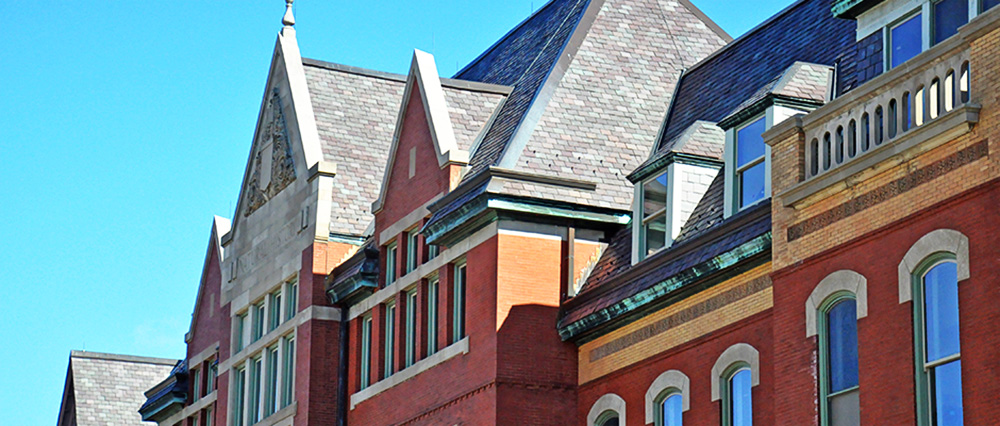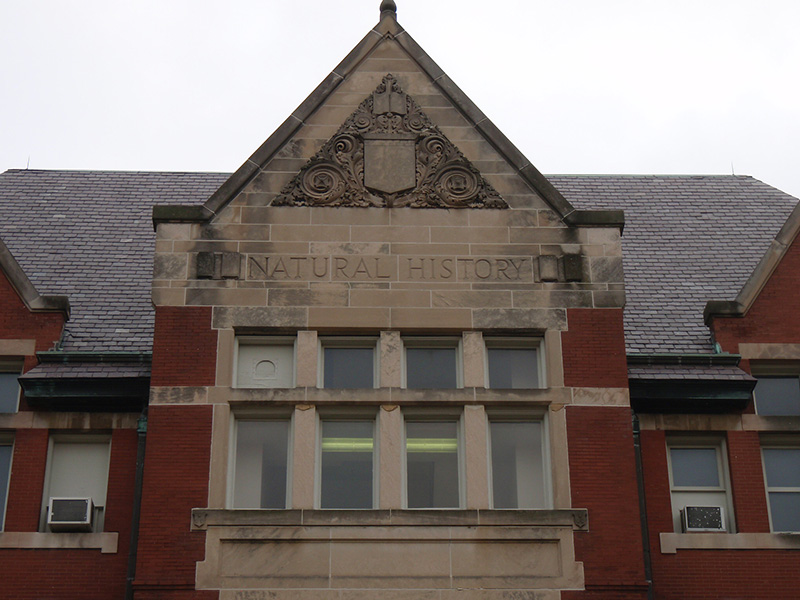Natural History Building





Challenge
The Natural History Building on the University of Illinois campus combined construction techniques from three different eras: 1894, 1908, and 1924. Structural deficiencies resulted in the building’s evacuation in 2010. The client needed detailed information about the building’s construction and condition to transform this landmark into a modern learning environment.
Solution
Atkinson-Noland & Associates investigated the masonry wall and concrete floor slab construction throughout this historic building. Various nondestructive testing methods—including surface-penetrating radar (SPR), mortar rebound hardness, infrared thermography, and flatjack testing—provided information about as-built conditions, material properties, and the current state of the masonry. We also provided recommendations to repair and strengthen the building.
Solutions Provided
A fiber-optic borescope is inserted in small holes drilled into mortar joints to evaluate internal wall conditions. Borescope investigations provide detailed information about internal wall features discovered through nondestructive evaluation. These surveys can also evaluate corrosion of embedded metals and continuity of brick header courses. Borescope analysis can reduce or eliminate the need for destructive probe openings.
A visual condition survey locates and identifies areas of damage and deterioration. Dilapidation, cracks, signs of movement, and other localized failures are mapped and documented on drawings to help determine scope of required repair work. Significant structural cracks are measured for size, location and directionality, where accessible. In addition, sources of deterioration and likely causes of damage are identified, along with repair recommendations, as applicable.
A flatjack is a flexible steel envelope, thin enough to fit within a masonry mortar joint. During testing, the flatjack is hydraulically pressurized and applies stress to the surrounding masonry. Flatjack tests can determine engineering properties of older and historic structures for structural evaluation, including in situ stress (ASTM C1196), masonry compressive modulus (ASTM C1197), masonry compressive strength (ASTM C1197), and mortar shear strength (ASTM C1531).
Infrared thermography uses a hand-held camera to detect differences in temperature as little as 0.1° F. This technique allows identification of structural features and conditions not otherwise detectable by visible light. Applications include rapid location of grouted cells within concrete block, moisture infiltration, cracks in masonry, and variations in insulation. Unlike other techniques, infrared thermography allows the quick, efficient survey of large areas.
Nondestructive tools such as moisture meters, surface-penetrating radar, and infrared thermography can identify areas of high moisture content and track moisture penetration back to its source. Spray tests are often used to identify moisture leakage pathways and the rate of moisture infiltration. ANA can perform tests in accordance with ASTM C1601, ASTM C1715, ASTM E514, ASTM E1105 and AAMA 501.2.
Surface-penetrating radar (SPR), also referred to as ground-penetrating radar or impulse radar, provides valuable information about structural and non-structural building components without causing damage. The radar data reveals voids, construction layers, and the presence of other materials, such as metal inclusions, as well as the thickness of the element.
Result
Our evaluation provided detailed information about the different construction methods used in the building, which was placed on the National Register of Historic Places in 1986. Nondestructive testing supplied critical data to support the $70 million renovation. The landmark structure reopened in 2017, housing state-of-the-art student spaces and research labs.
Project
Natural History Building
University of Illinois
Champaign, Illinois
Client
Hanson Professional Services
Springfield, Illinois
